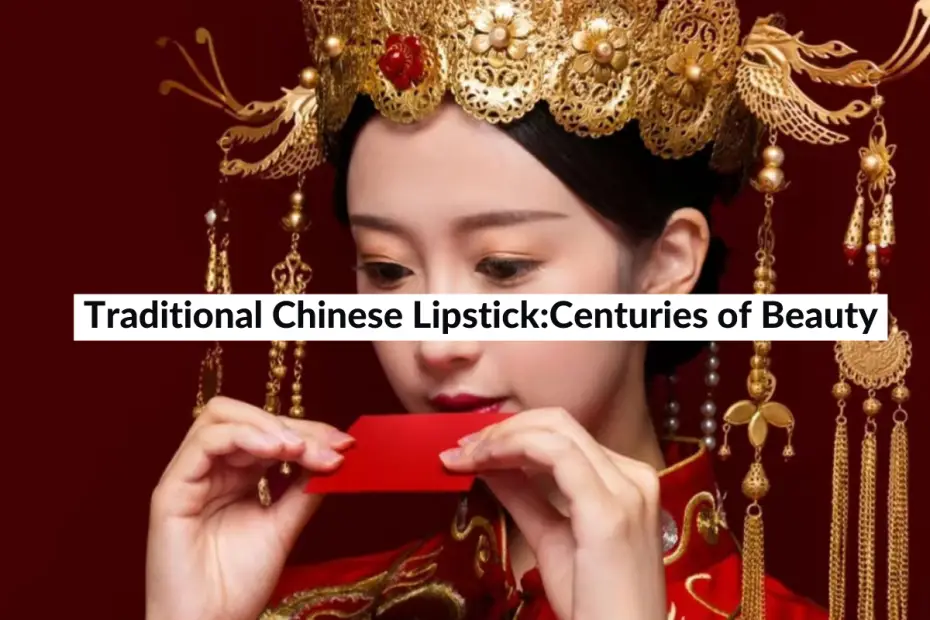In ancient China, there were two fascinating types of lipsticks called Chinese rouge and Chinese lipstick paper. These traditional makeup items were crafted using natural ingredients and had unique methods of application.
Today, I will delve into their composition, usage, and even share insights on how to create them.
Some Modern Chinese makeup brands make very traditional look lipsticks for you, such as Zeesea Dragon Lipstick and Florasis Love Lock.
What Did The Ancient Chinese Use For Lipstick?
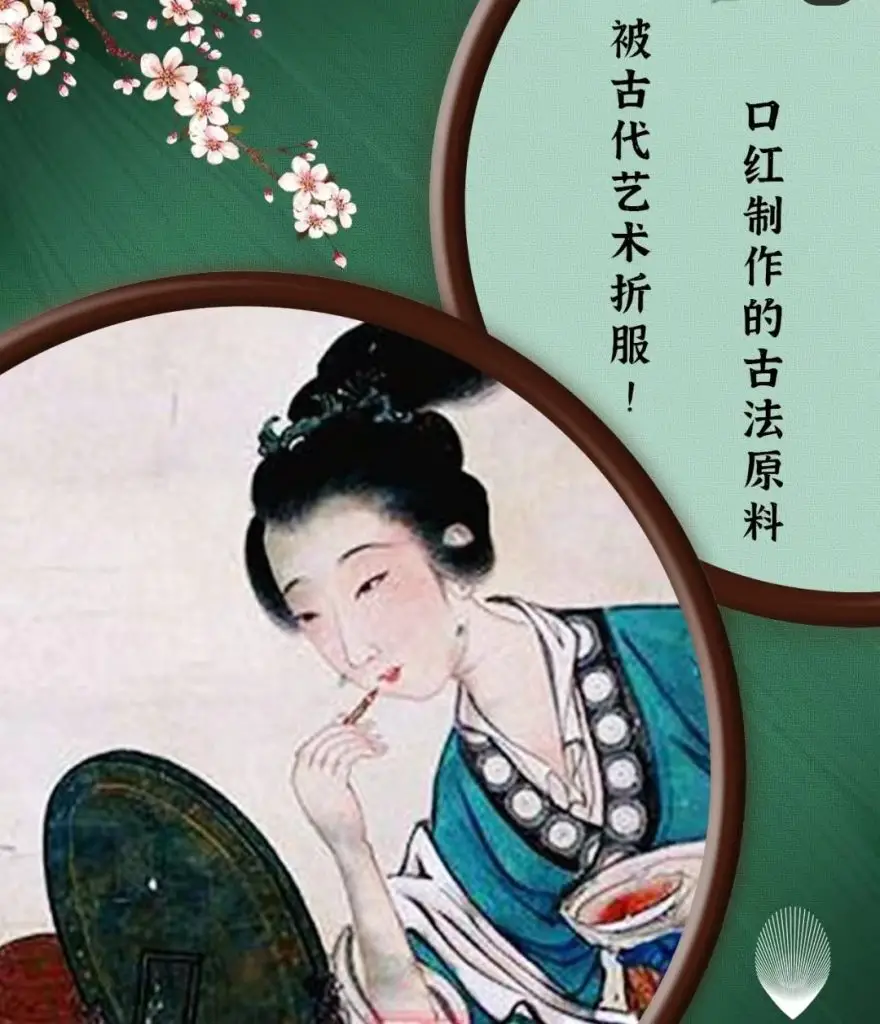
The ancient Chinese used a variety of substances to create lipstick. One popular ingredient was vermilion, a bright red pigment made from mercury sulfide. Vermilion was mixed with various oils and waxes to create a paste-like consistency, which could then be applied to the lips.
Another common ingredient in ancient Chinese lipstick was plant-based dyes. Flowers like safflower and rose petals were dried and ground into a fine powder. This powder was mixed with oils and animal fats to create lip color.
In addition to these natural ingredients, ancient Chinese women also used other substances to enhance the color and texture of their lip products. For example, some lipsticks contained crushed gemstones or pearl powder to add shimmer and iridescence.
It’s important to note that the ingredients used in ancient Chinese lipstick were not always safe or healthy. Mercury, for example, is a toxic substance that can be harmful if ingested or absorbed into the skin. While ancient Chinese cosmetics were undoubtedly beautiful, it’s crucial to recognize that their formulations may not meet modern safety standards.
Today, lipstick is made using a combination of synthetic and natural ingredients that have been extensively tested for safety and effectiveness. Modern lipstick formulations prioritize both beauty and health, providing a wide range of colors and finishes without compromising the well-being of the user.
What makeup brands do modern Chinese use these day?What Is Chinese Lipstick Paper?
Chinese lipstick paper, refers to thin sheets of paper infused with pigments and ingredients to create a cosmetic product resembling lipstick.
These papers were typically small and portable, making them convenient for women to carry in their accessories. Chinese lipstick paper was popular during the Ming and Qing dynasties and remained in use until the early 20th century.
How Do You Use Chinese Lipstick Paper?
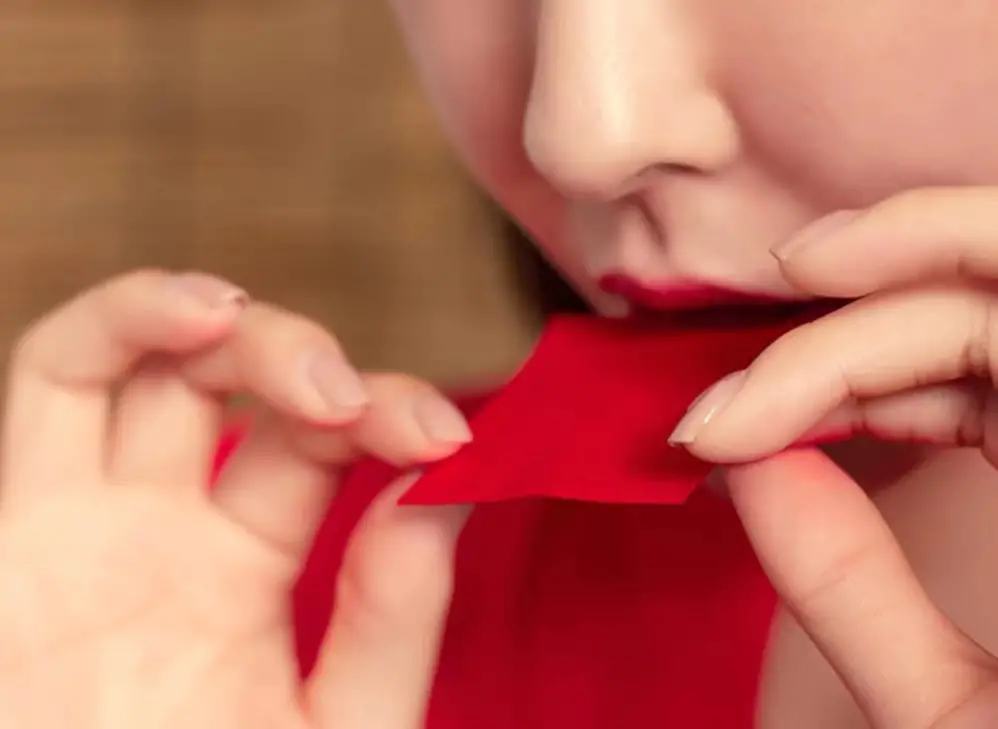
- Using Chinese lipstick paper was an art in itself. To apply the color to the lips, the user would simply take a piece of the paper and fold it in half, ensuring that the pigmented sides were facing inward.
- Next, they would moisten their lips with water or saliva, allowing the color to transfer onto the skin.
- By gently pressing their lips together, the pigment would spread evenly, resulting in a tinted and natural-looking lip color.
How To Make Chinese Lipstick Paper?
Creating Chinese lipstick paper involved a meticulous process. The following steps were taken to produce these innovative cosmetic sheets:
- Preparation of ingredients: The first step was to gather the necessary materials, which typically included pigments, medicinal herbs, oils, and a base material such as rice paper or silk fabric.
- Grinding pigments: The pigments, derived from various sources like flowers, minerals, or insects, were ground into fine powders using a mortar and pestle.
- Mixing the ingredients: The ground pigments were mixed with the base material and other ingredients such as herbal extracts or oils. This mixture was carefully blended to create a smooth and consistent paste.
- Application onto the base material: The paste was then evenly spread onto the base material, ensuring that the pigments penetrated the fibers or adhered to the surface.
- Drying and cutting: The sheets were left to dry naturally or placed in a controlled environment to expedite the process. Once dry, they were cut into small rectangular or circular pieces, ready for use.
What Is Chinese Lipstick Paper Made Of?
Chinese lipstick paper incorporated a variety of ingredients, each serving a specific purpose in the creation of the cosmetic product. The key components included:
- Pigments: Various natural pigments were used to impart color to the lipstick paper. Common sources included safflower petals for red tones, mineral powders for black or gray hues, and flower extracts for pink shades.
- Base material: Rice paper and silk fabric were the most commonly used base materials. They provided a suitable surface for the pigments to adhere to and ensured the paper had the necessary flexibility.
- Medicinal herbs: Some formulations included medicinal herbs known for their nourishing and protective properties. These herbs aimed to enhance the overall quality of the lipstick paper and provide additional benefits to the lips.
- Oils: Certain oils were added to the mixture to enhance the texture and moisturizing properties of the lipstick paper. Examples of oils commonly used included almond oil, jojoba oil, or sesame oil.
How To Make Traditional Chinese Lipstick?
Chinese Rouge
Traditional Chinese Rouge is a cosmetic that has been cherished and utilized by Chinese women for centuries. It comes in various forms, including powders and pastes, and is designed to enhance facial features by adding a touch of color and vibrancy to the cheeks and lips.
The Chinese Name for Traditional Chinese Rouge
In Chinese, Traditional Chinese Rouge is known as “Yan zhi.” The term “Yan” refers to the face, while “zhi” means adornment or decoration. Therefore, the name “Yan zhi” encapsulates the purpose of this cosmetic, which is to beautify and enhance the face.
History and Significance of Chinese Rouge
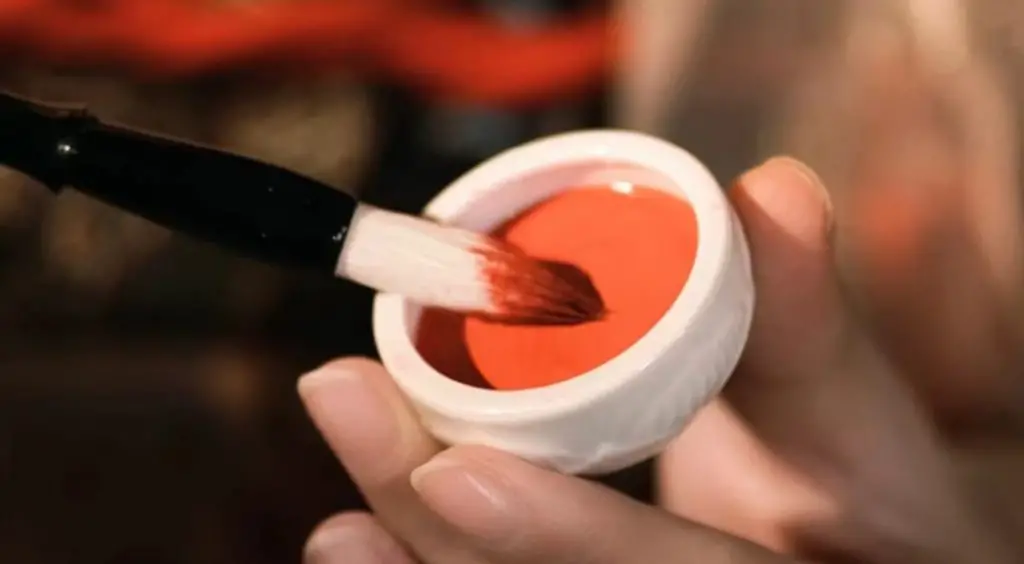
Chinese Rouge has a rich historical significance and has played a vital role in Chinese culture throughout the ages. It was initially used by the aristocracy as a symbol of beauty and social status. Over time, its popularity spread, and people from all social classes began incorporating it into their daily beauty routines.
Historical books have documented 9 distinct types of rouge, each with its unique properties and ingredients:
- Cinnabar: This rouge is derived from mercury sulfide, a naturally occurring mineral. It provides a vibrant red hue and was widely used in ancient times.
- Red-Blue Flower: Also known as safflower, dyer’s saffron, or American saffron, this ingredient is considered the crown jewel of rouge-making. It imparts a beautiful red color and was highly valued for its vivid pigmentation.
- Lithospermum Erythrorhizon: This ingredient was utilized in rouge for its effectiveness against pigmentation disorders such as freckles, melasma, and scars. It contributed to achieving a smooth and even complexion.
- Lac: Also referred to as sticklac, shellac, or cochineal, lac was employed to create a red pigment. This natural dye added richness and depth to the rouge.
- Caesalpinia Sappan: Primarily used as a dye, Caesalpinia Sappan lent its deep red color to rouge formulations. It was a favored ingredient for its vibrant and long-lasting pigmentation.
- Malva Verticillata: This ingredient was employed to extract pigments for rouge production. It contributed to achieving various shades of red, catering to individual preferences.
- Pomegranate Flower: Similar to the red-blue flower, the pomegranate flower boasted a captivating red color. It was often used as an alternative ingredient, offering a similar vibrancy and hue.
- Jasminum Nudiflorum: Also known as the winter jasmine or rouge flower, Jasminum Nudiflorum was specifically used for lip coloring. Its petals contributed to achieving a natural-looking flush on the lips.
- Rose: Roses were utilized in the extraction of pigments and fragrances for rouge. The petals added a delicate and subtle rosy tint to the formulation.
These 9 types of rouge ingredients played significant roles in ancient beauty practices, providing a diverse range of colors and effects for enhancing facial radiance and allure.
Traditional Chinese Rouge Application Techniques
Technique 1: Lip Brush Application
To apply Traditional Chinese Rouge to the lips, use a lip brush to carefully pick up a small amount of rouge. Starting from the center of the lips, apply the rouge outward towards the corners. Gently blend it for a natural-looking flush of color.
Technique 2: Fingertip Application
In ancient Chinese practices, the rouge was often applied using clean fingertips. Simply dab a small amount of rouge onto your fingertips and gently pat it onto the lips. This method allows for a delicate and subtle application.
Rouge Box
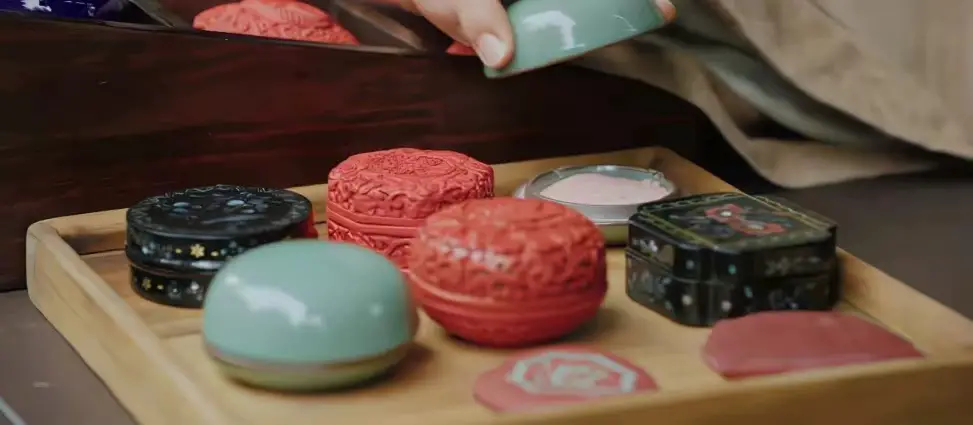
The rouge box held immense significance for affluent women in ancient times, surpassing its practical purpose. It was considered a work of art, crafted with precious jewelry materials that rivaled the value of actual jewelry.
The box served as a symbol of a woman’s identity, with its worth escalating in tandem with her esteemed social status.
| Period | Rouge Box Description |
|---|---|
| Han Dynasty | Specialized rouge boxes made of jade or glass; exquisite craftsmanship resembling art |
| Tang Dynasty | Introduction of porcelain, gold-plated silver, jade, and mother-of-pearl inlaying |
| Gongxian official kiln porcelain rouge boxes gained popularity | |
| Song Dynasty | Flourishing porcelain craftsmanship infused new life into rouge box production |
| Ming and Qing | No limits to materials used; rouge boxes became artwork displayed with pride |
| Rouge boxes served as tokens of love and were exchanged during marriage proposals | |
| Increasing luxury reflected the refinement of wealthy families’ possessions |
FAQs:
The ingredients used in ancient Chinese lipsticks were mostly natural and derived from plants and minerals. While they were generally safe to use, it’s important to note that the standards and regulations of cosmetic safety were not as advanced as they are today. It’s always advisable to exercise caution when using any cosmetic product, especially if you have specific allergies or sensitivities.
Lipstick was predominantly used by women in ancient Chinese culture. However, there were instances where men, especially actors or performers, would apply lip color for theatrical purposes. Lipstick was seen as a symbol of femininity and beauty, and its usage was largely associated with women.
Traditional Chinese lipstick paper is no longer widely used in modern times. With the advent of modern lipstick formulations and packaging, the practice of using lipstick paper has diminished. However, you may still find historical artifacts or replicas of lipstick paper in museums or cultural exhibitions.
In ancient Chinese culture, the act of applying lipstick was not merely cosmetic; it held symbolic meanings. Red, in particular, was associated with luck, happiness, and celebration. Wearing red lipstick was believed to bring good fortune and ward off evil spirits. It also symbolized vitality, passion, and beauty.
Ancient Chinese women had a rich array of beauty practices. These included skincare routines involving herbal remedies, the use of facial masks made from natural ingredients, elaborate hairstyles adorned with accessories, and the application of various cosmetics such as face powders, eyebrow pigments, and eye makeup.
